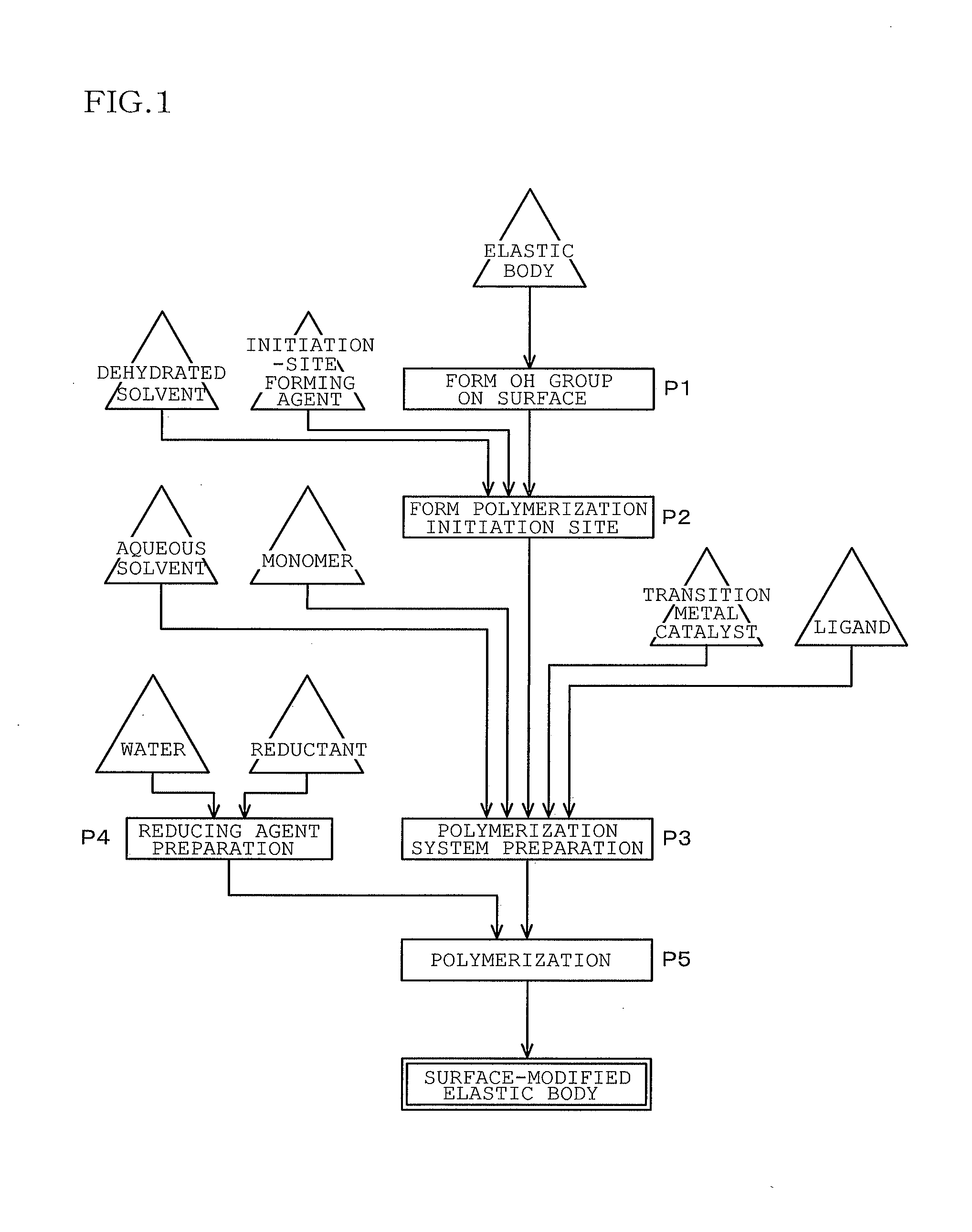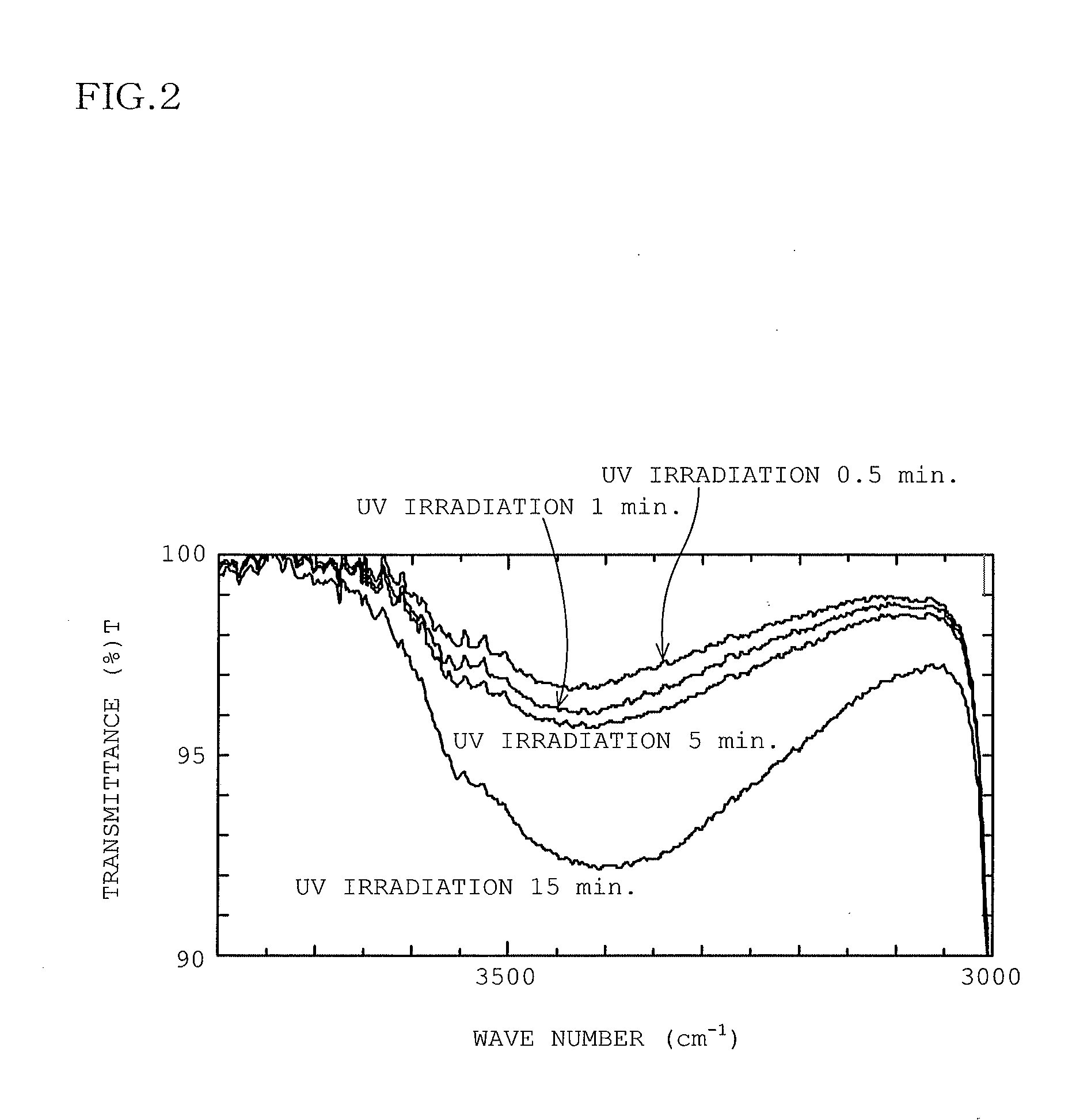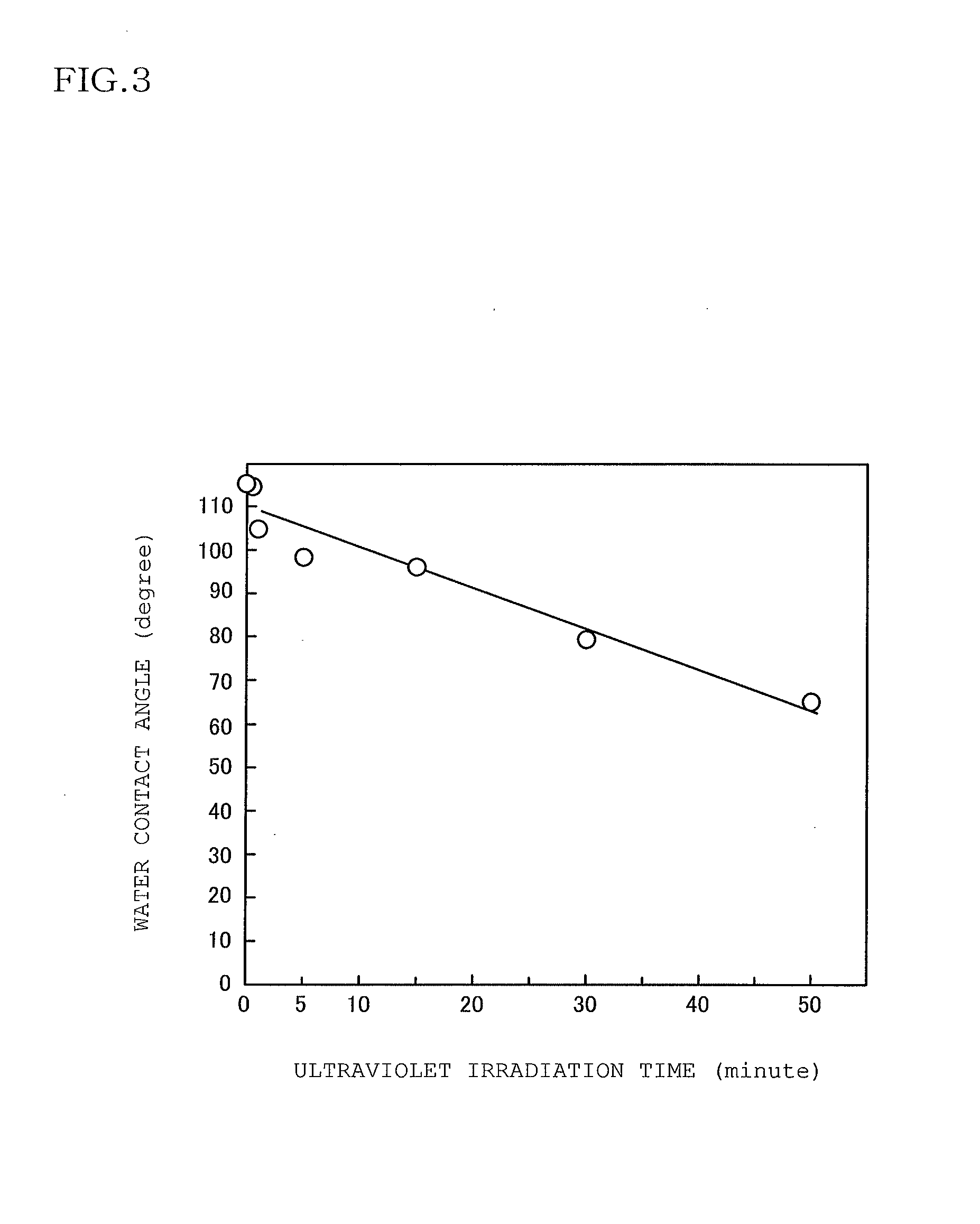Surface modification method, surface-modified elastic body, gasket for injector, injector, and tire
a technology of elastic body and surface modification, which is applied in the direction of liquid/fluent solid measurement, machines/engines, liquid transferring devices, etc., can solve the problems of inability to smoothly press the plugger, patient discomfort, and inaccuracy in the amount of the injection of medicaments, so as to achieve the effect of sliding
- Summary
- Abstract
- Description
- Claims
- Application Information
AI Technical Summary
Benefits of technology
Problems solved by technology
Method used
Image
Examples
first embodiment
[0085]At a distance of 30 mm, ultraviolet rays have been applied to the surface of a vulcanized rubber obtained through cross-linkage of chlorobutyl rubber with triazine (vulcanization conditions: 180 deg. C. and 10 minutes) at the level of 700 W for 15 minutes to effect hydroxyl formation. By referring to FIG. 2, a requirement for the ultraviolet irradiation time is that a water contact angle of 80 degrees can be obtained.
[0086]Subsequently, acetone acting as a dehydrated, non-aqueous solvent and 2-bromoisobutyryl bromide acting as an initiation-site forming agent (85 mMol / L), together with the chlorobutyl rubber bearing the hydroxyl group at its surface, have been stirred in the co-presence of triethylamine (127.5 mMol / L) for 5 hours at room temperature (ambient temperature) to form the initiation site of polymerization.
[0087]Polymerization system preparation has been accomplished by dissolving 2 g of 3-sulfopropyl methacrylate potassium salt acting as a monomer in 1.0 ml of water...
second embodiment
[0092]In implementing this embodiment, the first procedural step to the polymerization system preparation and further to the addition of the liquid reductant, and also the cleaning and other process conducted after polymerization were the same as those for the first embodiment. The only difference from the first embodiment is that the time required for polymerization involving stirring operation was set at 53.5 hours.
third embodiment
[0093]In implementing this embodiment, the first procedural step to the polymerization system preparation and further to the addition of the liquid reductant, and also the cleaning and other process conducted after polymerization were the same as those for the first and second embodiments. The only difference from the first and second embodiments is that the time required for polymerization involving stirring operation was set at 93.5 hours.
PUM
| Property | Measurement | Unit |
|---|---|---|
| Fraction | aaaaa | aaaaa |
| Angle | aaaaa | aaaaa |
| Length | aaaaa | aaaaa |
Abstract
Description
Claims
Application Information
 Login to View More
Login to View More - R&D
- Intellectual Property
- Life Sciences
- Materials
- Tech Scout
- Unparalleled Data Quality
- Higher Quality Content
- 60% Fewer Hallucinations
Browse by: Latest US Patents, China's latest patents, Technical Efficacy Thesaurus, Application Domain, Technology Topic, Popular Technical Reports.
© 2025 PatSnap. All rights reserved.Legal|Privacy policy|Modern Slavery Act Transparency Statement|Sitemap|About US| Contact US: help@patsnap.com



